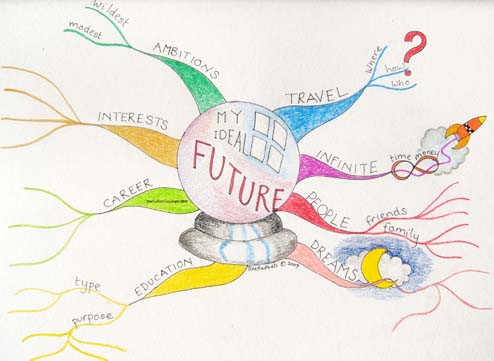2.1 Further uses for mind mapping
Constructing mind maps can feel strange at first. However, once you get used to the idea, with a little practice you can adapt the method for any aspect of your learning – planning essays, revising or just sorting out your thoughts.
Mind maps are used widely in business as well as education. They can be created with others as well as on your own, so that you can share and stimulate ideas. Maybe you have used them in your place of work?
You can use mind maps in your personal life too. They are particularly useful when you are trying to work out what to do next.
Activity 3 Mind mapping your future
For the next activity, try drawing a mind map of the things you would like to do and to achieve. Start with ‘My future’ in the centre, and see where it takes you! Be as free as you like. Here is an example:
Discussion
Did you enjoy the freedom of this activity, or did it feel too unstructured for you?
However you felt, please keep hold of this mind map. It may not seem relevant at the moment, but when you get to Weeks 7 and 8, it will be!
If you prefer using a computer instead of pen and paper, you may be interested in exploring computer-based mind mapping. Several websites offer free, or free trial, mind-mapping tools. If you would like to explore these, type ‘mind mapping’ into your search engine and see what you can find.
Don’t get too absorbed at this point and forget to come back! You can always spend more time exploring later. Maybe ‘bookmark’ any interesting pages to return to, or add them to your ‘favourites’.

